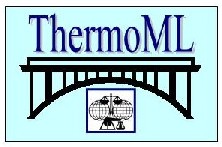 ThermoML, a project using Web-based technologies, has markedly improved the quality of data available to researchers and sped access to a lot of new scientific data.A partnership among the National Institute of Standards and Technology, the International Union of Pure and Applied Chemistry and several scientific journals is designed to deal with the rapid increase in data on thermodynamics, essential for designing and understanding chemical reactions. The quantity of such published data has been almost doubling every 10 years.
ThermoML, a project using Web-based technologies, has markedly improved the quality of data available to researchers and sped access to a lot of new scientific data.A partnership among the National Institute of Standards and Technology, the International Union of Pure and Applied Chemistry and several scientific journals is designed to deal with the rapid increase in data on thermodynamics, essential for designing and understanding chemical reactions. The quantity of such published data has been almost doubling every 10 years. The authors write for the five major partners in the program—the Journal of Chemical and Engineering Data, the Journal of Chemical Thermodynamics, Fluid Phase Equilibria, Thermochimica Acta and the International Journal of Thermophysics.
The data-entry process catches and corrects data errors in roughly 10 percent of journal articles.
“Despite the peer-review process, problems in data validation have led, in many instances, to publication of data that are grossly erroneous and, at times, inconsistent with the fundamental laws of nature,” the authors note.
…
Add new comment